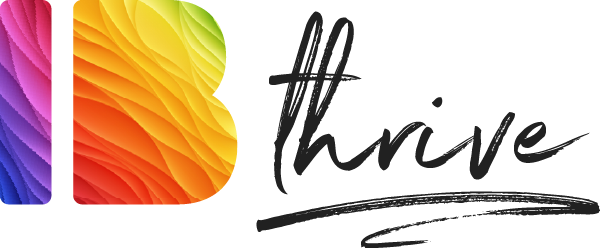HOW TO MAKE A SOCIAL IMPACT with Fatima Khalid
Introducing Social Impact Reporting
Hi everyone, I’m Fatima Khalid, the founder of Social Impact Reporting. In this workshop, I’ll be discussing how to create an impact through your business and leave a legacy. I mainly work on social impact measurement and reporting, helping corporates and charities track and report on their social impact goals. Today’s focus will be on strategy, sustainability, and impact, with practical tips for starting your sustainability journey.
The Core of Purpose-Driven Businesses: Sustainability and Social Impact
Purpose-driven businesses, including social enterprises and community interest companies, aim to make a profit while reinvesting or donating it to create positive social change. I’ll delve into two main concepts that form the core of being a purpose-driven business: sustainability and social impact.
Sustainability involves mitigating negative environmental effects like greenhouse gas emissions and plastic consumption.
Social impact focuses on creating positive change through financial inclusion, improved education, and more.
Embracing the Triple Bottom Line Approach for Sustainable Business Strategy
IB Thrive Boosting Your Branding
The triple bottom line approach considers profits, social impact, and environmental responsibility as interconnected priorities for a sustainable business strategy.
It’s a concept that allows businesses to consider business success beyond just their profit by including environmental and social responsibility targets. With this framework in mind, you can develop a sustainable business strategy that’s also profitable.
Incorporating these goals into your business priorities can guide action to maximise both purpose and profit. So for a business owner, you could set annual targets against all three criteria to track performance against metrics that go beyond the financial. That can help you to keep your business accountable and guide decision-making to serve social and environmental targets, as well as financial targets.
Starting Your Sustainability Journey: Identifying Areas for Improvement
So how do you get started with embedding new sustainability and social impact strategies into your business?
There are plenty of small steps you can take to make your small business more sustainable, while also being practical in the face of current challenges. Useful goals include minimizing greenhouse gas emissions, reducing waste, procuring environmentally conscious supplies, and supporting local suppliers.
I recommend starting by identifying areas of consumption and current suppliers to have a clear picture of your environmental impact. Regularly tracking progress helps identify areas for improvement and sustainable supplier options. Remember that making your business purpose-driven doesn’t have to compromise on profits. In fact, purpose can enhance competitiveness and customer satisfaction.
Integrating Purpose and Defining Social Impact Goals
It’s best to integrate purpose into your business plan from the very start, so that it can evolve as your business grows. It’ll also give your business an element and character beyond profit.
The Theory of Change is a helpful tool to define and articulate your impact goals. The Theory of Change is a framework that allows you to look at a specific social impact goal and uncover the steps that it takes to create a long-lasting impact. This is really helpful because it can help you to identify the parts of the impact pathway that are the most relevant to you and help you to understand what those outcomes can look like in real-world data. The process can then help you to better articulate your vision in a way that makes sense to your internal and external stakeholders.
A really good question to ask yourself is: If you were to have a mission, a statement that you want to kind of push forward through your business, how would you try to articulate that? Spend some time thinking about it, and use your answer to guide the decisions you make about your business.
Getting Started with Measuring Social Impact
So how do you start measuring your social impact? Start by creating an indicator list, setting up data collection strategies, and establishing a timeline with assigned responsibilities. There are lots of small steps that small businesses can begin their social impact journey, such as donating time or funds, conscious hiring and sourcing, and developing socially responsible products and services.
Aligning with UN Sustainable Development Goals (SDGs) and UN Global Compact
The UN Sustainable Development Goals (SDGs) are a really relevant reporting framework for social impact. The SDGs offer a wide range of goals and indicators that businesses can align with to demonstrate their commitment to social impact. If you had to pick, which SEGs do you think would align most with your business purposes? You can choose any number, but I’d recommend maybe one to three.
You can also use the UN Global Compact, which is more business-focused and designed primarily for larger businesses. It emphasizes key principles related to human rights, labor standards, the environment, and anti-corruption.
Measuring Social Impact: Maximizing Impact and Communicating Results
In my experience, there are two main reasons that it’s useful to measure social impact.
The first is to maximize impact by improving service delivery. This involves using the theory of change analysis to set impact goals and establish indicators to measure progress on the ground. By continuously analyzing data, organizations can identify weaknesses and make iterative changes to their approach. Measurement also helps in understanding tangible outcomes and ensures that projects are useful, sustainable, and beneficial to the community.
The second reason for measuring social impact is to communicate the organization’s impact to stakeholders in a concise and meaningful way. This includes funders, partner organizations, and customers, and it can be hugely helpful when encouraging people to engage with and trust in your brand. And this is where the data you’ve gathered is really useful, as it will actively and effectively convey the social benefits of the program. You can’t argue with the numbers!
To conclude
Measuring social impact is crucial for guiding decision-making, improving programs, and building credibility with stakeholders. It’s really important to have a clear understanding of impact goals, and it’s useful to use the theory of change to identify specific measurable impacts. I hope you enjoyed the talk!

